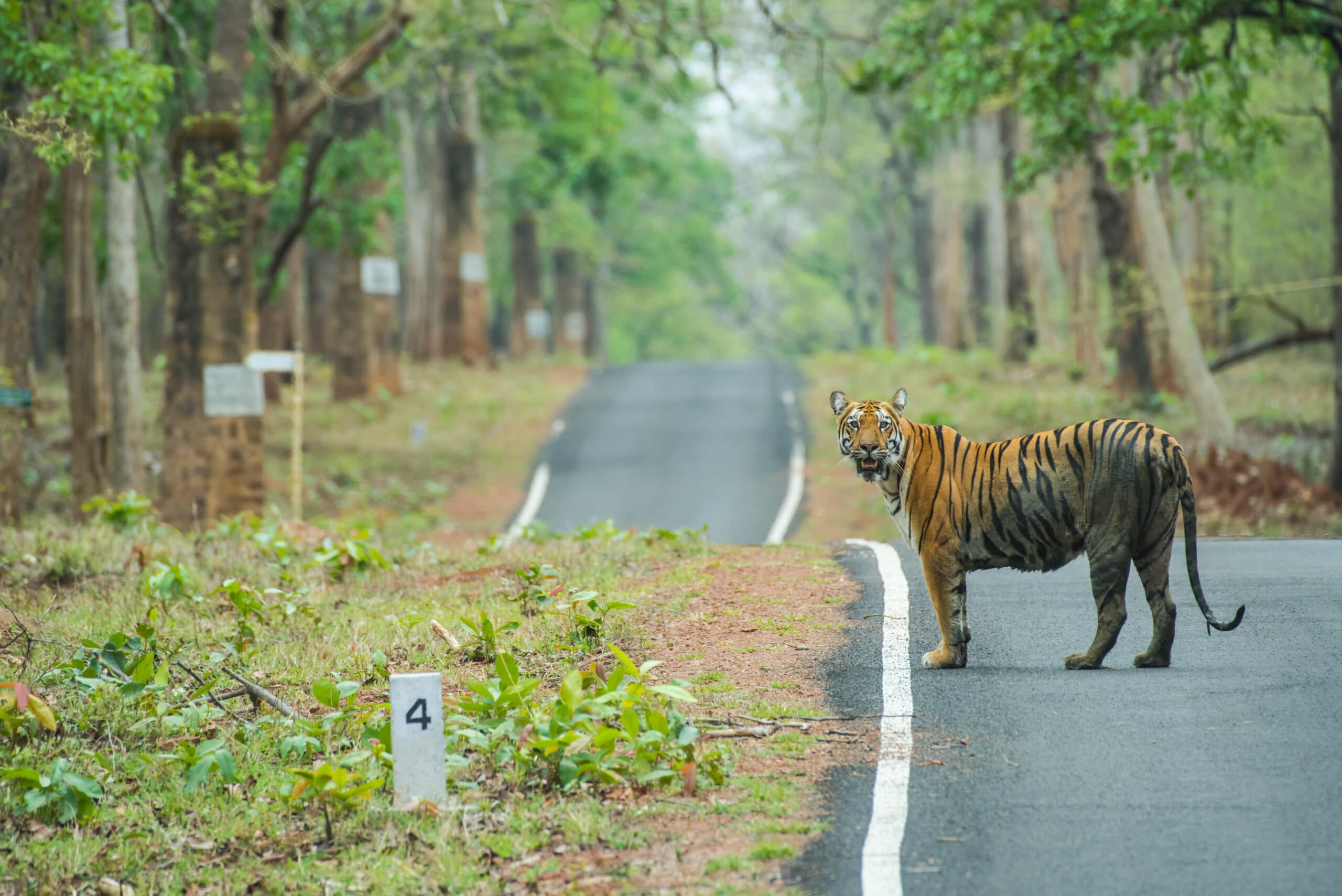Tiger reserves in India are the areas notified for the protection of tigers and its prey. There are 50 tiger reserves in India governed by the Project Tiger that was launched in 1973. A tiger reserve includes Core zone and Buffer zone. The Core zone of a tiger reserve happens to be the critical tiger habitat where the human activities are restricted. The buffer zone is the peripheral area, surrounding the core. It allows the coexistence between humans and wildlife with a lesser degree of protection. Human activities for livelihood, developmental activities are permitted in the buffer zone.
As per the Tiger Status Report, 2018, the total tiger population in India was estimated at 2,967. The tiger population is increasing at a rate of 6% per annum. The states with the highest number of tigers include Madhya Pradesh (526) followed by Karnataka (524) and Uttarakhand (442).
Tiger habitats in India
Tigers can be found in more than 20 states and in different ecoregions. The habitat areas of tiger include high mountains, mangrove swamps, tall grasslands, to dry and moist deciduous forests, as well as evergreen and shola forest systems.
Why Tiger conservation?
In 1900, India had around 40,000 tigers. By 1970, the number of tigers in India declined to around 18,00. Indian tiger became an endangered species and the need to conserve the top predator of the ecosystem was felt. Tiger maintains the food chain from the apex. It keeps the population prey herbivores under check and helps in maintaining a balance between vegetation and herbivorous. Tiger conservation becomes extremely important as its extinction would disturb the entire ecosystem and food chain cycle.
Project Tiger
A centrally sponsored scheme for the conservation of tiger and spread awareness, Project Tiger was launched in 1973. Initially, 9 tiger reserves were brought under Project Tiger, and today with 2.21% India’s geographical area, we have 50 tiger reserves under this project.
Tiger reserves in India
| S. No. | Tiger Reserve | State |
| 1 | Nagarjunsagar-Srisailam | Andhra Pradesh |
| 2 | Namdapha | Arunachal Pradesh |
| 3 | Pakke | Arunachal Pradesh |
| 4 | Kamlang | Arunachal Pradesh |
| 5 | Orang | Assam |
| 6 | Manas | Assam |
| 7 | Nameri | Assam |
| 8 | Kaziranga | Assam |
| 9 | Valmiki | Bihar |
| 10 | Indravati | Chhattisgarh |
| 11 | Udanti-Sitanadi | Chhattisgarh |
| 12 | Achanakmar | Chhattisgarh |
| 13 | Palamau | Jharkhand |
| 14 | Bandipur | Karnataka |
| 15 | Bhadra | Karnataka |
| 16 | Nagarahole | Karnataka |
| 17 | Dandeli-Anshi | Karnataka |
| 18 | Biligiri Ranganatha Temple | Karnataka |
| 19 | Periyar | Kerala |
| 20 | Parambikulam | Kerala |
| 21 | Kanha | Madhya Pradesh |
| 22 | Pench | Madhya Pradesh |
| 23 | Bandhavgarh | Madhya Pradesh |
| 24 | Panna | Madhya Pradesh |
| 25 | Satpura | Madhya Pradesh |
| 26 | Sanjay-Dubri | Madhya Pradesh |
| 27 | Melghat | Maharashtra |
| 28 | Pench | Maharashtra |
| 29 | Tadoba-Andhari | Maharashtra |
| 30 | Sahyadri | Maharashtra |
| 31 | Nawegaon-Nagzira | Maharashtra |
| 32 | Bor | Maharashtra |
| 33 | Dampa | Mizoram |
| 34 | Similipal | Odisha |
| 35 | Satkosia | Odisha |
| 36 | Ranthambore | Rajasthan |
| 37 | Sariska | Rajasthan |
| 38 | Mukundara Hills | Rajasthan |
| 39 | Kalakad-Mundanthurai | Tamil Nadu |
| 40 | Mudumalai | Tamil Nadu |
| 41 | Anamalai | Tamil Nadu |
| 42 | Sathyamangalam | Tamil Nadu |
| 43 | Kawal | Telangana |
| 44 | Dudhwa | Uttar Pradesh |
| 45 | Amangarh | Uttar Pradesh |
| 46 | Pilibhit | Uttar Pradesh |
| 47 | Corbett | Uttarakhand |
| 48 | Rajaji | Uttarakhand |
| 49 | Sunderbans | West Bengal |
| 50 | Buxa | West Bengal |
Threats to tiger population
- A royal sport for centuries, Tiger hunting, proved to be the biggest disaster for the species. The royal sport was also followed by the Britishers during their rule and reduced the tiger population substantially.
- Today, when the royal hunt is no more followed, the organized poaching driven by the international demand for tiger skin, products and body parts, has become the biggest threat to tiger conservation.
- The other threats to tiger population include the developmental activities, deforestation and habitat destruction
Tiger reserves in India: Fast facts
- In early days, tigers were tracked by professional shikaris by counting the pugmarks for shikar.
- The first lion census, which was based on pugmarks, was conducted by Wynter-Blyth and Dharmakumarsinh in 1950.
- The Sariska disaster due to poaching in 2004-05 and other similar events prompted the Government of India to develop a new strategy for tiger conservation. subsequently, the Wildlife (Protection) Act 1972 was amended in 2006 to bring a statutory authority, the National Tiger Conservation Authority (NTCA).
- Today, NTCA collaborates with the state governments and non-profit organisations to implement the policies on tiger conservation.
Also, read; Explained: Oil Spillover Mauritius and the environmental impact



